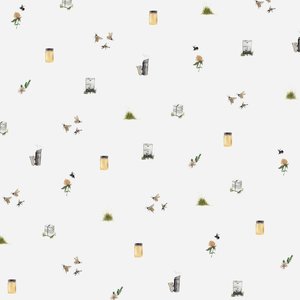POLLINATION BASICS
It’s National Pollinator Week 2019. While this week is annually held to celebrate and educate, pollination is happening all around us, all the time. It can be hard for us humans to see, but it’s responsible for around a third of our global food! Here are some basic facts around pollinators and pollination.

Define pollination: Pollination is the delivery of pollen to the female organs of a plant. Pollen is made by the male organs of a plant and contains genetic information needed for plant reproduction. Pollen may be transferred to female organs on the same plant, or to another plant (cross-pollination). Resulting, are seeds for new plants. Pollen can be carried by wind, water, and animals such as birds and bees.
Insects such as bee species, flies, wasps, butterflies and moths are efficient pollinators because they fly, and can therefore visit many plants. They are also motivated to interact with pollen for their own food sources – pollinators can be attracted by the nectar produced by the plant, or pollen, depending on how they feed. Pollination by insects is especially important for Australian native trees. Native bees pollinate many members of the plant family Myrtaceae, which includes the beloved native tea tree and eucalyptus.
What actually happens up close ?
As a simplified example, bees foraging for nectar as their own food source will inadvertently brush up against a plant’s male organs, leaving pollen on the bee’s body. At the bee’s next flower visit, they will transfer the pollen onto the female reproductive parts of the plant, resulting in pollination.
Plants also have their own parts to play in their pollination: plants mainly use scent to incentivise pollinators, and colour can be effective to attract bees. But the flower shape also has a lot to do with the process of pollination. Most plants will have easily accessible pollen/nectar, being open flat or tubular flowers. But for some species like the Hibbertia plant species, ‘buzz pollination’ is required because of their shape. Buzz pollination can be practised almost uniquely by the native Blue Banded Bee, and involves vibrating to get the pollen out. This highlights the intricacy of pollination and the special relationships between insects and plants.

Information:
The Australian Museum
https://australianmuseum.net.au/learn/animals/insects/pollination/




